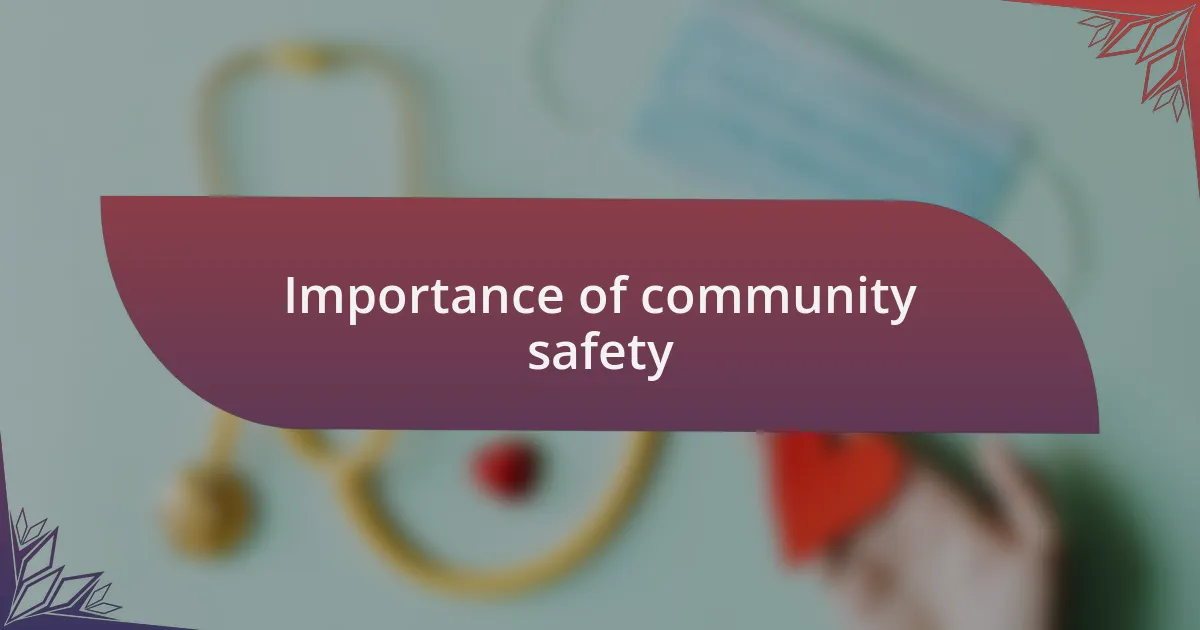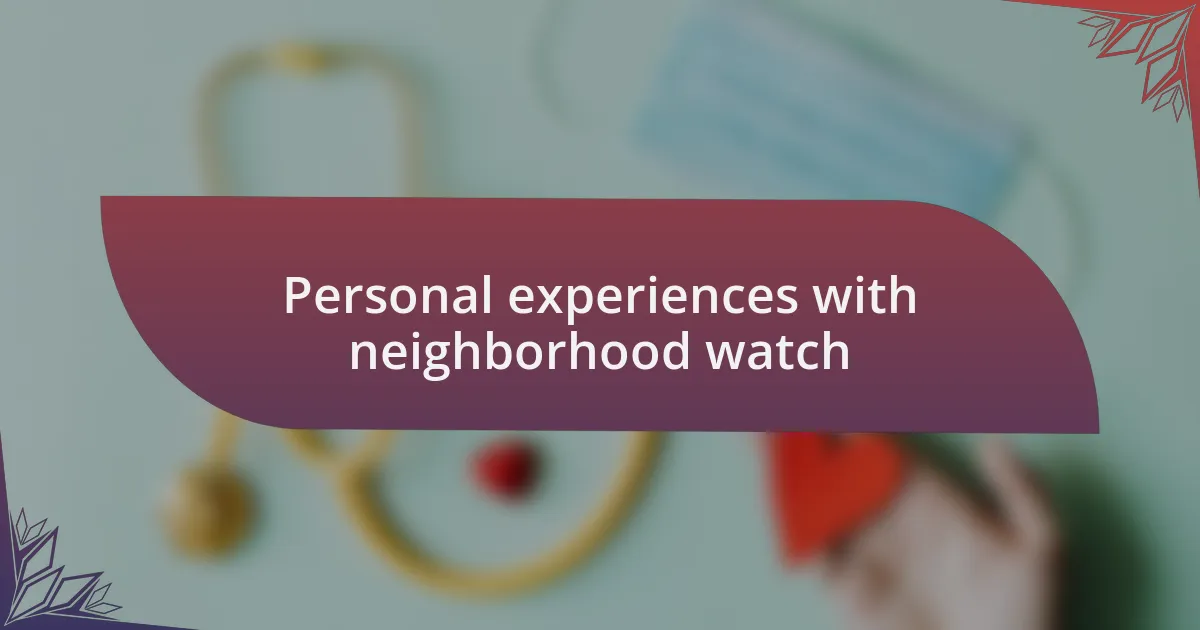Key takeaways:
- Neighborhood watch programs enhance community safety by fostering collective responsibility among residents and collaboration with law enforcement.
- Community safety involves both crime prevention and the creation of a supportive network, emphasizing trust and communication among neighbors.
- Personal experiences within neighborhood watch groups highlight their role in transforming anxiety into proactive responses and building deeper connections among residents.
- Engagement in neighborhood safety initiatives fosters friendships and a sense of belonging, enriching the overall quality of life in the community.

Definition of neighborhood watch programs
Neighborhood watch programs are grassroots initiatives where community members come together to keep an eye on one another, enhancing safety and security within their neighborhoods. These programs are typically organized by local residents in collaboration with law enforcement, fostering a sense of collective responsibility and vigilance.
I remember the first time I participated in a neighborhood watch meeting—it felt empowering to connect with my neighbors. We shared concerns about local crime and brainstormed ways to make our streets safer. Have you ever felt that sense of unity? Neighborhood watch programs encourage dialogue and collaboration, allowing residents to work together for a common goal.
At their core, neighborhood watch programs aim to deter crime through increased observation and reporting. When people feel a sense of ownership over their surroundings, it naturally creates an environment where suspicious activities are reported promptly. Isn’t it fascinating how a simple act of watching out for each other can lead to more vibrant and secure communities?

Importance of community safety
When we talk about community safety, we’re really addressing much more than just crime prevention; it’s about building a supportive network. During a recent neighborhood gathering, I could feel the palpable sense of relief as residents shared their experiences. It was an eye-opener to realize that safety isn’t just the absence of crime; it’s also about knowing that someone is watching out for you.
The essence of community safety lies in trust and communication. I remember once when a neighbor noticed unusual activity down the street and immediately reached out to others. That quick action not only led to a timely report to authorities but also reinforced the idea that we are all in this together. This is the kind of environment that fosters resilience and encourages everyone to take an active role in their community’s well-being.
Moreover, a safe community can profoundly impact public health. When individuals feel secure in their environment, they’re more likely to engage in outdoor activities and participate in local events. I’ve seen this play out firsthand; families come together for block parties, their laughter echoing down the street, which not only builds relationships but also enhances mental well-being. Isn’t it incredible how safety can enhance not just our neighborhoods but also our overall quality of life?

Personal experiences with neighborhood watch
I recall a time when our neighborhood watch group sprang into action after noticing strangers lingering near our park late at night. The anxiety was palpable, yet the swift mobilization of our members transformed that tension into a proactive response. We organized meetings where everyone shared their concerns, which not only strengthened our vigilance but also deepened our sense of connection.
In another instance, I once found myself walking home when I noticed a familiar face from the neighborhood watch stationed by the entrance to our street. It was comforting to see someone actively looking out for our safety, creating an unspoken bond of trust. I remember thinking how comforting it felt to know there was someone nearby, ready to help if needed. Isn’t it reassuring when you know that fellow residents truly care about your well-being?
What truly struck me was an encounter at our last neighborhood watch event, where we shared stories of thwarted crimes and close calls. It was enlightening to hear how a simple phone call could prevent potentially dangerous situations. I realized that these interactions extend beyond safety; they foster friendships, share vulnerabilities, and ultimately weave a tapestry of support that enriches our lives. Do you ever wonder how a few dedicated individuals can change the atmosphere of an entire neighborhood?